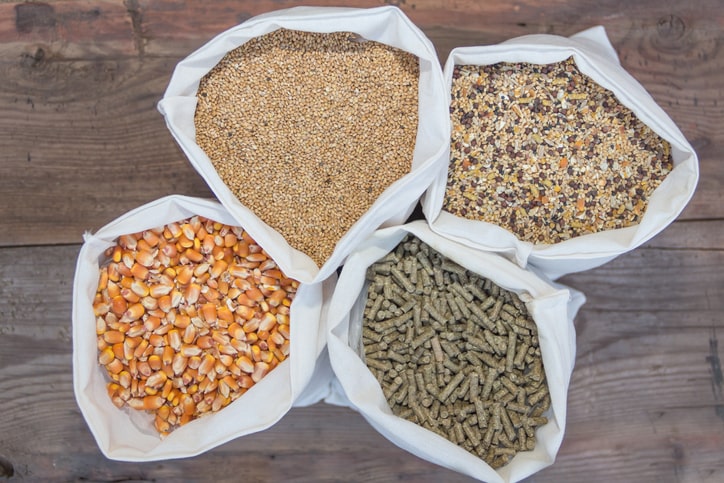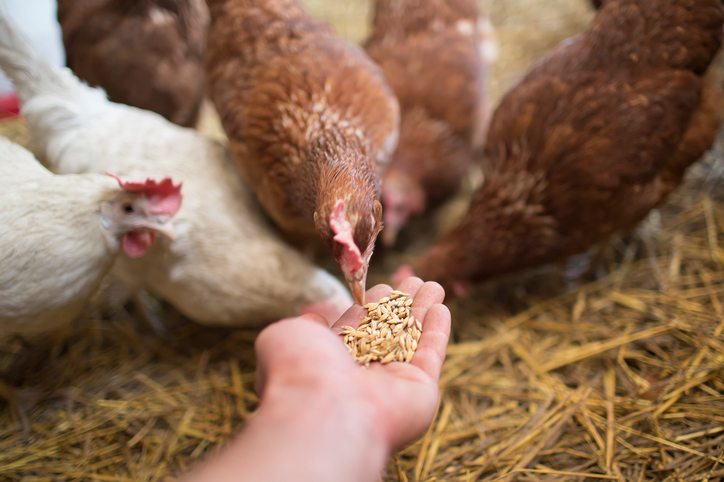In recent years, the concept of growing fodder has gained tremendous popularity among poultry enthusiasts. More farmers want to learn how to grow fodder for chicken feed to provide high-quality, nutrient-rich food for their feathered friends. This articles provides a step-by-step guide on this subject, making you a proud owner of a happy and healthy flock.

What is Chicken Fodder?
Chicken fodder is essentially sprouted grains that offer an excellent source of vitamins and minerals for your chickens. These grains are soaked and allowed to grow over several days, resulting in a nutrient-rich feed that promotes better egg production and supports overall health.

Benefits of Growing Fodder
Health Benefits
Fodder is highly nutritious, enriched with vitamins and minerals, and naturally helps to enhance your chickens’ immune systems.
Cost-Effective
Producing your own fodder can significantly reduce feeding costs by utilizing basic grains like barley or wheat, which are often cheaper than commercial chicken feed.
Environmental Benefits
Growing your own fodder reduces the need for packaged feed, thereby reducing waste and taking a step towards sustainable farming.

Choosing the Right Grains
To grow effective fodder, choose grains such as barley, wheat, oats, or sunflower seeds. These grains are preferable due to their high germination rates and nutritious profiles.

Step-by-Step Guide to Growing Fodder
1. Soaking the Grains
Begin by soaking your selected grains in water for 12-24 hours. This process softens the grains and initiates sprouting.
2. Draining and Rinsing
After soaking, drain the grains and rinse them thoroughly with fresh water to eliminate any mold or contaminants.
3. Setting Up Trays
Spread the soaked grains evenly in trays, ensuring they have sufficient room to grow. You can reuse plastic trays or purchase specialized fodder trays.
4. Watering
Keep the grains moist by lightly watering them twice a day. Ensure the trays have drainage to prevent waterlogging, which can lead to mold formation.
5. Sprouting
Within a few days, you’ll notice sprouts forming. Continue to water daily until the fodder matures to the desired length, typically around 7-10 days.
Feeding the Fodder
Once the fodder has reached around 4-6 inches in length, it is ready to be fed to your chickens. Simply cut the fodder and provide it as a fresh, nutritious meal for your birds.
Storage Tips
It’s best to grow fodder in batches to ensure a continuous and fresh supply. If you need to store fodder, keep it in a cool, dry place away from direct sunlight to maintain its nutritional value.
Potential Issues and Solutions
Mold Growth
Mold is a common problem when growing fodder. To prevent this, ensure proper drainage and avoid overwatering. Additionally, rinsing grains before sprouting can minimize mold risk.
Poor Germination
Poor germination rates can be due to old or low-quality grains. Always use fresh, high-quality grains from reputable sources to ensure successful fodder growth.
FAQs
Is Fodder Suitable for All Types of Chickens?
Yes, fodder is suitable for all chicken breeds and provides a nutritious supplement to their regular diet.
How Much Fodder Should I Feed My Chickens?
A general guideline is to feed 2-3% of the chickens’ body weight in fodder daily. This can be adjusted based on your flock’s specific needs and conditions.
Can I Grow Fodder Indoors?
Absolutely! Fodder can be grown indoors with appropriate lighting and ventilation to facilitate healthy growth.
Conclusion
Growing fodder for chicken feed is a fantastic and sustainable way to ensure your flock receives the best possible nutrition. With minimum effort and cost, you can provide a high-quality, nutritious supplement that will contribute to the overall health and happiness of your chickens. Ready to get started? Follow our step-by-step guide and delight in the superior benefits of homegrown fodder.
For more information on chicken care and feeding tips, check out these articles on our website: Lays jumbo eggs, Tasting chicken, and Lives longest.
For further reading, check this Best backyard chickens guide by Timber Creek Farmer.
As an Amazon Associate, I earn from qualifying purchases.








